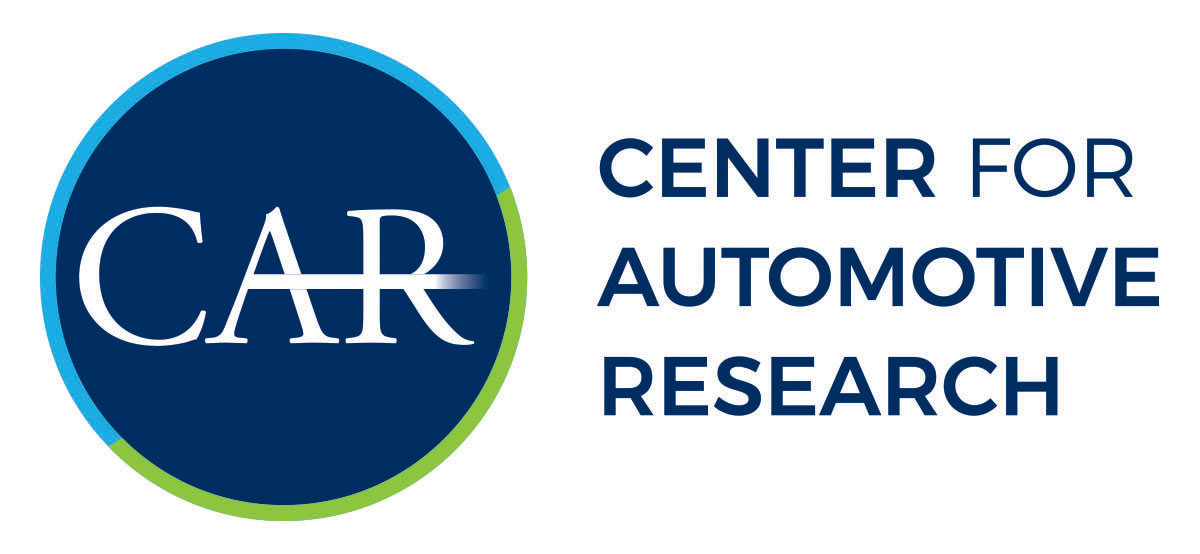Publications
The Center for Automotive Research is involved in the research of significant issues that relate to the future direction of the global automotive industry. As a nonprofit research organization, and in cooperation with study funders, most CAR research is released publicly through this website.
The Potential Effects of the 2017-2025 EPA/NHTSA GHG/Fuel Economy Mandates on the U.S. Economy
This study constitutes an economic cost benefit analysis of the national standards for light duty vehicle fuel economy (FE) and greenhouse gas emissions (GHG) set by the U.S. National Highway Traffic Safety Administration (NHTSA) and the Environmental Protection Agency (EPA) for the years 2017-2025.
Assessing the Fleet-wide Material Technology and Costs to Lightweight Vehicles
This study provides insight to the technology and cost to reduce vehicle weight for the U.S. fleet of light-duty vehicles
The Growing Role of Mexico in the North American Automotive Industry – Trends, Drivers and Forecasts
Mexican auto assembly capacity is projected to more than double between 2010 and 2020. This rapid growth is fuel by the investment infusion of $13.3 billion to move 3.3 million units of vehicle capacity from Japan, Germany, and South Korea to Mexico. This report highlights North American vehicle production trends,…
Mixed Materials Solutions: Alternative Materials for Door Assemblies
Collaboration demonstrates up to 65% weight savings compared to baseline design. The Coalition for Automotive Lightweighting Materials (CALM) reports on a co-development demonstration project focused on mixed-material lightweighting solutions. Collaborative contributions of more than twenty supplier companies offer a dozen integrated solutions deploying a mix of materials and technologies allowing…
The Impact of New Mobility Services on the Automotive Industry
The rise of new mobility services (NMS) is part of a bigger and long-term gradual evolution of transportation preferences toward on-demand shared mobility in a multimodal system. CAR researchers have conducted an investigation with a focus on how these services are likely to impact the automotive industry. The report describes…
Potential Cost Savings and Additional Benefits of Convergence of Safety Regulations between the United States and the European Union
This report examines the costs of divergent safety regulations in the United States and the European Union and highlights the economic impacts of having two different regulatory regimes. With the shift to a to a global-vehicle strategy by most automotive manufacturers, differences in safety regulations in the United States and…
Impact of Automated Vehicle Technologies on Driver Skills
CAR researchers analyze the impacts of technological dependence on the driving skills and the ability of an operator to resume operation of the vehicle in the event of an automated vehicle (AV) failure or limitation. The findings presented in this work are based on the most recent research on the…
Performance Based Planning and Programming for Pavement Management
Emerging technologies, such as connected and automated vehicle technology, offer new sources of data pertaining to the condition of infrastructure. In this report, CAR researchers examine the potential for using novel data sources for pavement condition assessment. The data sources considered include: smartphone apps and crowdsourcing, automated vehicle systems data,…
Public Perceptions of Connected and Automated Vehicle Technologies
This report, commissioned by the Michigan Department of Transportation (MDOT), presents findings from research on public perceptions of connected and automated vehicle (CAV) technologies. The results of this research stem from a series of interviews with test drivers who participated in a connected vehicle-to-infrastructure (V2I) demonstration and from a web-based…
Identifying Real World Barriers to Implementing Lightweighting Technologies and Challenges in Estimating the Increase in Costs
Automakers have made great strides in lightweighting vehicles as a means to help achieve greater fuel efficiency. However, vehicle manufacturers face real-world challenges in finding cost-effective ways to continue implementing further mass reduction solutions needed to off-set weight gains due to increased demand for comfort, convenience, and safety technology. Regulators…
